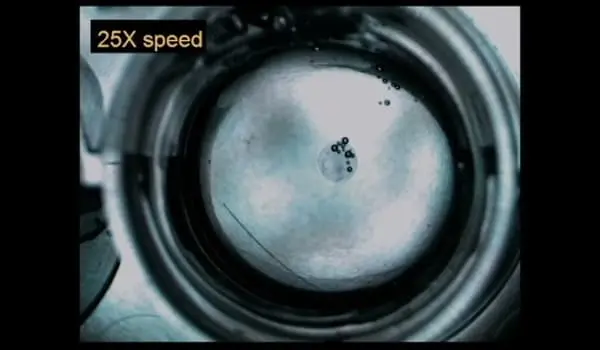Berkeley Lab and the University of Massachusetts Amherst scientists have demonstrated the first self-powered, aqueous robot that operates continuously without the use of electricity. The technology has the potential to be used as an automated chemical synthesis system or a pharmaceutical drug delivery system.
Images of R2-D2 or C-3PO may come to mind when you think of a robot. But robots can do more than just provide entertainment on the big screen. Robotic systems, for example, can improve safety and efficiency in a lab by performing repetitive tasks and handling hazardous chemicals.
However, before a robot can begin working, it requires energy, which is typically provided by electricity or a battery. Even the most advanced robot can run out of power. For many years, scientists have wished to create a robot that can operate autonomously and continuously without the use of electricity.
Scientists at the Department of Energy’s Lawrence Berkeley National Laboratory (Berkeley Lab) and the University of Massachusetts Amherst have demonstrated just that, as reported last week in the journal Nature Chemistry, using “water-walking” liquid robots that, like tiny submarines, dive below water to retrieve precious chemicals, then surface to deliver chemicals “ashore” again and again.
By using chemistry to control an object’s buoyancy, we have broken a barrier in designing a liquid robotic system that can operate autonomously. We don’t have to provide electrical energy because our liquibots get their power or ‘food’ chemically from the surrounding media.
Tom Russell
The technology is the world’s first self-powered, aqueous robot that operates continuously without the use of electricity. It has the potential to be used as an automated chemical synthesis system or a pharmaceutical drug delivery system.
An animated GIF of an artist’s rendering of autonomous, continuous “liquid robots.” Images of R2-D2 or C-3PO may come to mind when you think of a robot. But robots can do more than just provide entertainment on the big screen. Robotic systems, for example, can improve safety and efficiency in a lab by performing repetitive tasks and handling hazardous chemicals. However, before a robot can begin working, it requires energy, which is typically provided by electricity or a battery.
“By using chemistry to control an object’s buoyancy, we have broken a barrier in designing a liquid robotic system that can operate autonomously,” said senior author Tom Russell, a visiting faculty scientist and professor of polymer science and engineering at the University of Massachusetts Amherst who leads the Adaptive Interfacial Assemblies Towards Structuring Liquids program in Berkeley Lab’s Materials Sciences Division.

According to Russell, the technology significantly advances a class of robotic devices known as “liquibots.” Other researchers have demonstrated liquibots that can perform a task autonomously, but only once; and some liquibots that can perform a task continuously, but require electricity to keep running. Russell explained that “we don’t have to provide electrical energy because our liquibots get their power or ‘food’ chemically from the surrounding media.”
Russell and first author Ganhua Xie, a former postdoctoral researcher at Berkeley Lab who is now a professor at Hunan University in China, discovered that “feeding” the liquibots salt makes the liquibots heavier or denser than the liquid solution surrounding them through a series of experiments in Berkeley Lab’s Materials Sciences Division.
Additional experiments at Berkeley Lab’s Molecular Foundry by co-investigators Paul Ashby and Brett Helms revealed how the liquibots transport chemicals back and forth. Because they are denser than the solution, the liquibots, which resemble small open sacks and are only 2 millimeters in diameter, congregate in the middle of the solution and fill up with specific chemicals. This sets off a chain reaction that produces oxygen bubbles, which, like little balloons, lift the liquibot to the surface.
Another reaction attracts the liquibots to the container’s rim, where they “land” and unload their cargo. The liquibots oscillate back and forth like a clock’s pendulum and can run indefinitely as long as there is “food” in the system.
Depending on their formulation, a swarm of liquibots could perform multiple tasks at the same time. Some liquibots, for example, can detect different types of gases in the environment, while others react to specific chemicals. The technology could also enable autonomous, continuous robotic systems to screen small chemical samples for clinical applications, as well as drug discovery and synthesis applications. Russell and Xie intend to investigate how to scale up the technology for larger systems, as well as how it would work on solid surfaces, in the coming months. Berkeley Lab’s Molecular Foundry is a nanoscience user facility.





